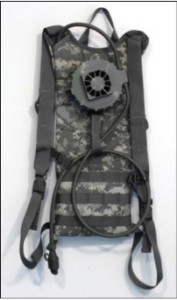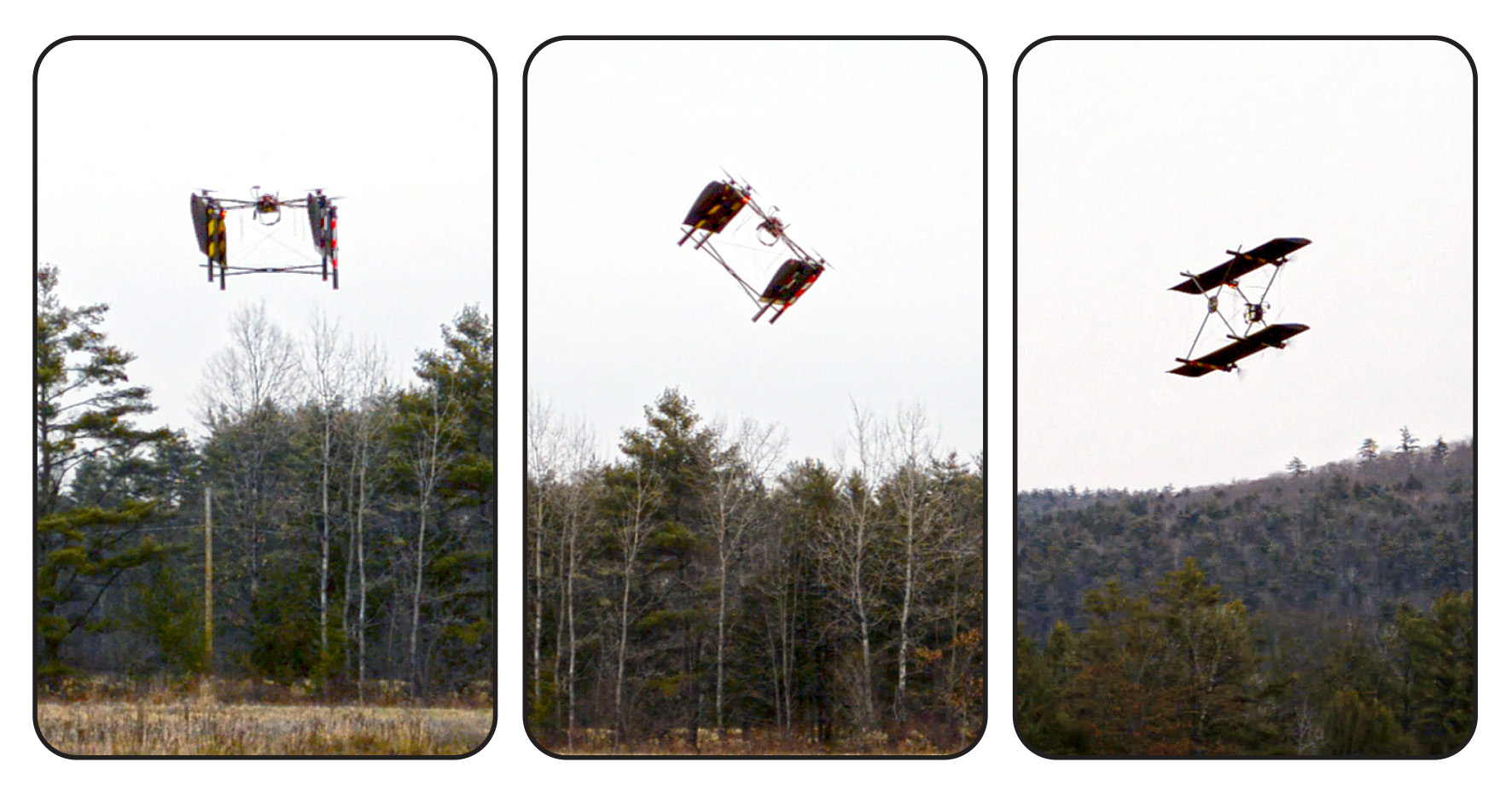Creare offers a full range of services in fluid dynamics and heat transfer. Our experience and engineering judgment has been honed by hundreds of projects and dozens of years of collective experience in the analysis, design, fabrication, testing, and troubleshooting of fluid/thermal systems.
Our work and experience encompass virtually any situation: stationary or rotating machinery; coupled fluid flow, heat, and mass transfer; chemically-reacting flows; micro- and earth gravity; and aircraft aerodynamics. And we work at scales ranging from microscopic capillary pores to large power plant piping.
Examples of our assignments include:
- Predicting temperature uniformity during processing of integrated circuits.
- Calculating the flow field in the Space Shuttle solid rocket motor joints and seals following the Challenger accident.
- Developing means to employ gas lift for mining solids from the ocean at three mile depths.
- Experimentally demonstrating technology for a cryogenically cooled super diffusing conductor for multi-megawatt pulsed power.
- Designing and demonstrating high performance unmanned aircraft systems.
Creare utilizes a combination of commercial software packages and custom software to analyze fluid flow, heat, and mass transfer processes. By combining our simulation expertise with our design, fabrication, and experimental capabilities, Creare offers a unique, integrated, and balanced solution to difficult technical problems.
For our analyses, we utilize the full range of methods, including spreadsheet models, lumped parameter models, and computational fluid dynamics (CFD) models. We are very experienced in writing custom functions and subroutines to extend the capabilities of commercial software. Commercial software tools used include ANSYS Fluent, ANSYS CFX, SINDA/FLUINT, TurbAero and CompAero.
Do you have a need for CFD services? Please fill out an information request here.
Examples of our experience include:
- Using lumped parameter software (circuit/network analogy) for heat transfer design and fluid flow modeling of complex systems.
- Turbomachinery performance: nozzle, impeller, and diffuser design/optimization, and modeling of seal and bearing flows.
- Lumped parameter modeling of cryocooler systems to predict off nominal, off design, transient response, and cooldown performance.
- Turbulent reacting flow in gas turbine combustors and afterburners.
- Development of hybrid continuous and discrete phase techniques for fuel sprays in combusting flows.
- Heat and mass transport in protective clothing and garments.
- Radiative heat transfer in thermophotovoltaic power systems.
- Kinetics, heat transfer, and wave optics in optical cavities of gas lasers.

Creare’s individual beverage chiller mounts on a hydration pack to cool drinking water on demand to promote healthy hydration for soldiers and marines.
Creare is a leader in the development of innovative refrigeration devices for applications where new technology is required to meet challenging performance requirements. We have developed systems using a wide range of refrigerants, including R134a, isobutane, water, CO2, ammonia, R141b, and R123. The thermodynamic cycles in the systems encompass advanced vapor compression cycles, open membrane absorption cooling cycles, ejector refrigeration cycles, and hybrid cycles.
Much of our work focuses on applications where compact size and high efficiency are critical, such as man-portable and vehicular systems. Our refrigeration technology makes optimum use of the available power sources and heat rejection environment. In addition to electrically-driven vapor compression, we have developed an innovative heat-driven refrigeration cycle, high-efficiency thermoelectric cooling devices, and a regenerable LiCl refrigeration process for spacesuit cooling.
For over 50 years, Creare has analyzed, designed, tested, and developed two-phase flow systems and components for applications as diverse as ocean mining, chemical plant safety, cryogenic cooling of railguns, nuclear reactor safety, computer cooling, high-power electronics, novel refrigeration systems, oil-gas transportation, and protective textiles. Whatever the application, we approach two-phase flow and heat transfer mechanistically, basing our models, designs and experiments on fundamental physics to enable application to a range of operating conditions and geometric scales.
Creare has extensive experience with two-phase flow under variable/reduced gravity and microgravity for applications in space, including more than 600 “zero-gravity” parabolas in NASA’s KC-135 aircraft.
Examples of other projects include:
- Development of gravity-insensitive thermal management systems with distributed cooling for high-performance spacecraft and aircraft.
- Design and construction of unique, compact phase separators and compact, efficient two-phase ejectors for use in innovative thermal management and refrigeration cycles.
- Creation of two-phase flow analysis software, including the two-fluid system code, MOtran™.
- Design and fabrication of deployable, freeze-tolerant spacecraft radiators and high temperature, ultra-light heat pipes.
Creare applies a fundamental understanding of fluid mechanics; a practical knowledge of bearings, seals, motors, and electronic drives; and long experience with a wide range of materials and fabrication methods to produce miniature fans and blowers for service in challenging applications. A thorough understanding of the fluid dynamics that influence blower performance enables us to choose the optimal type of blower (centrifugal, regenerative, cross-flow, etc.) and specify the design to meet specific performance requirements.
Our fans and blowers can incorporate a wide range of materials, and we have developed innovative techniques to produce complex shapes that enable the best performance while meeting power input and acoustic noise constraints. Operating speeds range from 1000 to 100,000 rpm.
Our services range from conceptual design to production of deliverable prototypes. Our work has included developing an innovative regenerative blower for space suit ventilation, efficient crossflow blowers that cool high-power electronic components while consuming low power, and novel miniature blowers for cooling electronics in laptop computers.
Creare offers a full range of engineering analysis services using finite element analysis (FEA), computational fluid dynamics (CFD), and related tools. By combining our simulation expertise with our design, fabrication, and experimental capabilities, Creare offers a unique, integrated, and balanced solution to difficult technical problems.
Creare uses ANSYS Mechanical software for the majority of our structural analysis work, due to its ease-of-use, CAD connectivity and broad capabilities, including modal analysis, harmonic analysis, random vibration, shock loading, and acoustic analysis.
Examples of recent applications solved using FEA at Creare include:
- Launch vibration analysis of spacecraft payload systems.
- Optimization of acoustic horn geometries for landmine detection.
- Rotordynamics analysis of high-speed turbomachine and bearing assembly.
- Buckling analysis of a deep-sea containment structure of a hydrothermal vent.
- Structural-thermal optimization of the dimple pattern in a microchannel recuperator.
- Evaluation of load-carrying capacity of an advanced wheel bearing assembly for a launch gear shuttle.
- Design of the center support for an aerodynamic air dryer in an air cycle machine.

Creare’s engineers bring a deep understanding of heat transfer and fluid flow, combined with broad experience using and developing a wide range of fabrication methods and materials to solve clients’ problems that require advanced heat exchanger technology. Our services include design analysis, prototype fabrication, and heat exchanger testing and performance assessment. We have designed and built heat exchangers from a wide range of materials, including aluminum, silicon, copper, copper foam metal, copper/graphite composites, alumina dispersion-strengthened copper, glass, Hastelloy, Inconel, stainless steel, Kapton, Nafion and urethane. Creare heat exchangers have operated at temperatures ranging from near-absolute zero to 2000°F.
Examples of our work include:
- Compact, lightweight, and low-cost recuperator for small gas turbines, assembled from precision-stamped metal foils that are bonded and sealed by precision laser welding.
- Exhaust gas heat recovery exchanger has been optimized for use with a single-phase bottoming cycle and to obtain high thermal effectiveness and extremely low exhaust stream pressure drop.
- A low-drag radiator for heat rejection from high-altitude UAVs.
- High-efficiency recuperators for compact Brayton power systems using micromachined silicon plates. These spaceborne systems require heat exchangers with a thermal effectiveness greater than 99% and which are small in size and lightweight.
Creare has the advanced capabilities needed to develop unique vacuum pumps. We use specialized analytical tools including molecular, transition, and Newtonian fluid flow models. Our test and fabrication facilities enable us to conduct high vacuum, variable temperature, compression and flow measurements. We know how to design and fabricate miniature electric motors that are very efficient. These motors operate at speeds of 100,000 to 200,000 RPM and consume less than 2 W of electric power under no load conditions.
Examples of our vacuum pumps projects include:
- The world’s smallest hybrid turbomolecular/molecular drag vacuum pump, used in portable, battery-powered analytical equipment such as mass spectrometers. This pump, about the size of a D-cell flashlight battery, weighs only 150 grams, and can develop an ultimate pressure in the 10-8 Torr range.
- A space-qualified pump that is part of the key analytical measurement suite on the Mars Science Laboratory rover Curiosity and is planned for use on the European Space Agency ExoMars mission.
- Small, low-power, low mass scroll pumps for portable mass spectrometers that can be used for homeland security, atmospheric sampling, and monitoring of weapons of mass destruction applications.

Large, 55 pound, vertical take-off and landing (VTOL) fixed wing drone capable of seamlessly transition from vertical flight (left) to horizontal flight (right).
Creare designs and optimizes novel unmanned aircraft systems (drones) with a range of fixed wing and rotary wing configurations. We utilize in-house and open-source aerodynamic modeling tools to develop aircraft concepts for specific applications. We then refine the designs through on-site testing and use of high fidelity CFD and FEA. Our prior drone work focuses heavily on applications related to vertical take-off and landing systems, wind and atmospheric measurements, mapping and navigation, and object transport and delivery.
In the example shown at right, we designed a large, 55 pound, vertical take-off and landing (VTOL) fixed-wing drone capable of a seamless transition from vertical flight to horizontal flight. The VTOL capability simplifies logistics and operations while the bi-plane configuration extends flight range and endurance compared to mono-wings for wingspan constrained applications (e.g., shipboard operations). The system utilizes multi-rotor attitude control in all phases of flight and requires no control surfaces.

Multi-rotor drone capable of picking and placing objects in a lab (left); shipboard testing of a multi-rotor drone (center); and small, 500 gram, vertical take-off and landing (VTOL) drone (right).
Additional examples of our drone work are shown above. We have designed and built a multi-rotor drone capable of picking and placing objects in a lab. The canted rotors and corresponding controls effectively decouple vehicle attitude and translation (http://acl.mit.edu/projects/hexacopter-agile-plate-transport). We developed a tethered drone to survey the air wake behind the ship superstructure for use in developing operational flight envelopes for air-capable ships. And we have successfully built and tested a small, 500 gram, vertical take-off and landing (VTOL) drone capable of profiling the atmosphere to over 18,000 feet. At altitude, the system transitions to horizontal fixed wing flight for a low-power return trajectory.